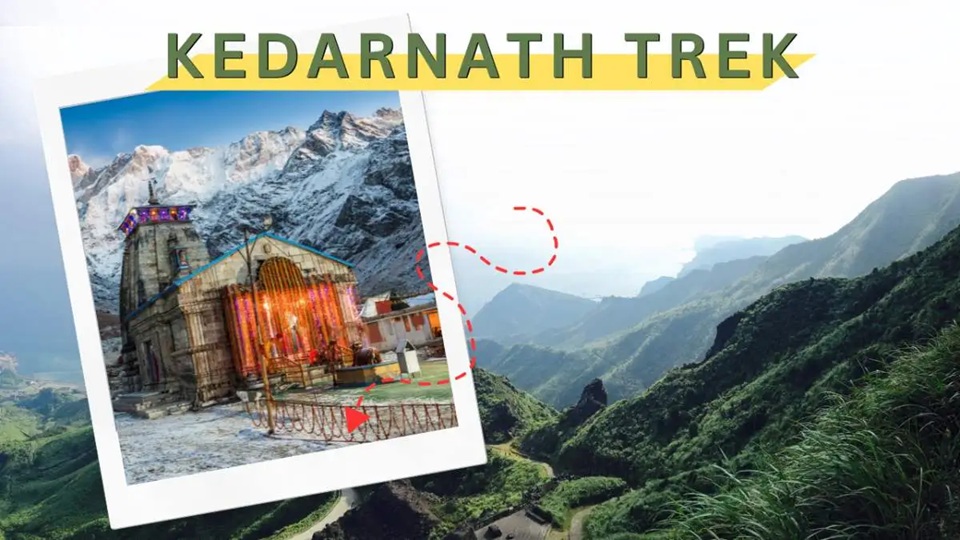Before diving in, here’s a quick overview: the Kedarnath Trek is a 16–18 km pilgrimage route from Gaurikund (1,982 m) to the sacred Kedarnath Temple (3,583 m) in Uttarakhand, India. Open each year from Akshaya Tritiya (April/May) to Kartik Purnima (October/November), the trek offers both spiritual fulfilment—as one of the twelve Jyotirlingas and part of the Chota Char Dham & Panch Kedar circuits—and breathtaking Himalayan vistas. The ideal windows are May–June and September–October; monsoon (July–August) brings landslide risk, and winter (November–April) the temple closes under heavy snow. Successful completion requires moderate fitness, proper acclimatization, permits/registration, and safety measures against altitude sickness, flash floods, and weather extremes. Below you’ll find detailed sections on what, when, why, how, safety, and travel advisories to plan your journey confidently.
What Is the Kedarnath Trek?
The Kedarnath Trek is a medium-to-steep 16–18 km uphill pilgrimage from Gaurikund to Kedarnath Temple, demanding good fitness and acclimatization. Nestled on the banks of the Mandakini River at 3,583 m, the temple is one of Shiva’s twelve Jyotirlingas and the foremost of the Panch Kedar pilgrimage sites. The route traverses dense conifer forests, cascading waterfalls, and rocky slopes, culminating beside the historic North-Indian Himalayan architecture of the 12th-century shrine.
When to Trek?
Best Seasons
Summer (May–June): Post-snowmelt, daytime highs of 10–15 °C and clear skies make this the most popular period for pilgrimage packages and unobstructed trails.
Autumn (September–October): After monsoon rains recede, the temperature (5–12 °C) and lush landscapes offer serenity and fewer crowds.
Periods to Avoid
Monsoon (July–August): Heavy rainfall triggers slippery paths and frequent landslides—travel becomes hazardous.
Winter (November–April): Temple closes; temperatures plunge below –10 °C, and deep snow blocks the route.
Why Trek?
Spiritual Significance: Kedarnath is one of the twelve Jyotirlingas of Shiva, believed to have been built by the Pandavas and celebrated in ancient Tevaram hymns.
Char Dham & Panch Kedar: As the first stop in the Chota Char Dham circuit and main temple among the five Panch Kedar sites, it completes a vital spiritual journey.
Natural Beauty & Challenge: The trek’s dramatic Himalayan vistas, verdant valleys, and sense of personal accomplishment draw adventurers and devotees alike.
How to Trek?
Access & Registration
To Gaurikund: Best reached by road from Rishikesh/Haridwar (220–230 km), via Devprayag and Rudraprayag.
Registration: Mandatory online/offline at the Uttarakhand Tourism Care portal or through authorized centers; carry valid ID proofs and photos.
Trail Details
Distance & Duration: 16–18 km, typically 6–8 hours on foot; ponies (5–6 hr) or porters (pithu) available at extra cost.
Helicopter Option: IRCTC-booked heli-services operate from Phata, Sersi, and Guptkashi (approx. INR 5,500–7,740 per person) for those with limited time or mobility.
Accommodation: Basic guesthouses and dharamshalas in Kedarnath; advance booking through the Badarinath-Kedarnath Temple Committee website is recommended.
Safety Considerations
Altitude Sickness: Ascend gradually; stay hydrated, rest at intermediate points, and carry medications for AMS.
Weather & Terrain: Sudden changes can bring rain, hail, or snow; trek with wind- and water-proof gear and sturdy boots.
Flash Flood & Landslide Risk: The devastating June 2013 floods underscored the Himalayan unpredictability—monitor weather advisories continuously .
Local Support: Hire certified guides and mule-operators; inform local authorities or your guesthouse of your itinerary.
Travel Advisory & Emergency Contacts
Helpline Numbers (7 am–9 pm):
- Tourist Care (Toll-Free within Uttarakhand): 1364
- Char Dham Control Room: 0135-2559898, 2552627, 3520100
Emergency Services: Police 112; Ambulance 108; Fire Brigade 101; Women’s Helpline 1090 .
Temple Committee Help-Desk: +91-7302257116; online prasad & accommodation queries at badrinath-kedarnath.gov.in .
Registration & Apps: Download “Tourist Care Uttarakhand” for Char Dham yatra registration, vehicle permits, and health declarations .
Conclusion
The Kedarnath Trek melds profound devotion, Himalayan adventure, and cultural heritage. By choosing the optimal season (May–June or September–October), preparing physically, registering in advance, respecting local guidelines, and heeding safety advisories, you can transform this 16–18 km ascent into a memorable and sacred journey. Plan early, pack smart, and may your steps to Kedarnath be guided by both faith and prudence.
